Building a new home or should it be commercial property? A critical decision that you will make is about your roof.
A roof system that is complete is installed with construction roofing that is new on a structure that is brand-new. Replacing an old roof upon an existing building is quite different.
Why does this matter? Your investment is protected by a well-planned roof for decades. It stops weather and lowers energy costs.
Costly mistakes are avoided through planning ahead and working with skilled professionals. Money as well as headaches are saved later by the right choices now.
Think about this information that is before your project starts. You should have awareness of it.
What Is New Construction Roofing?
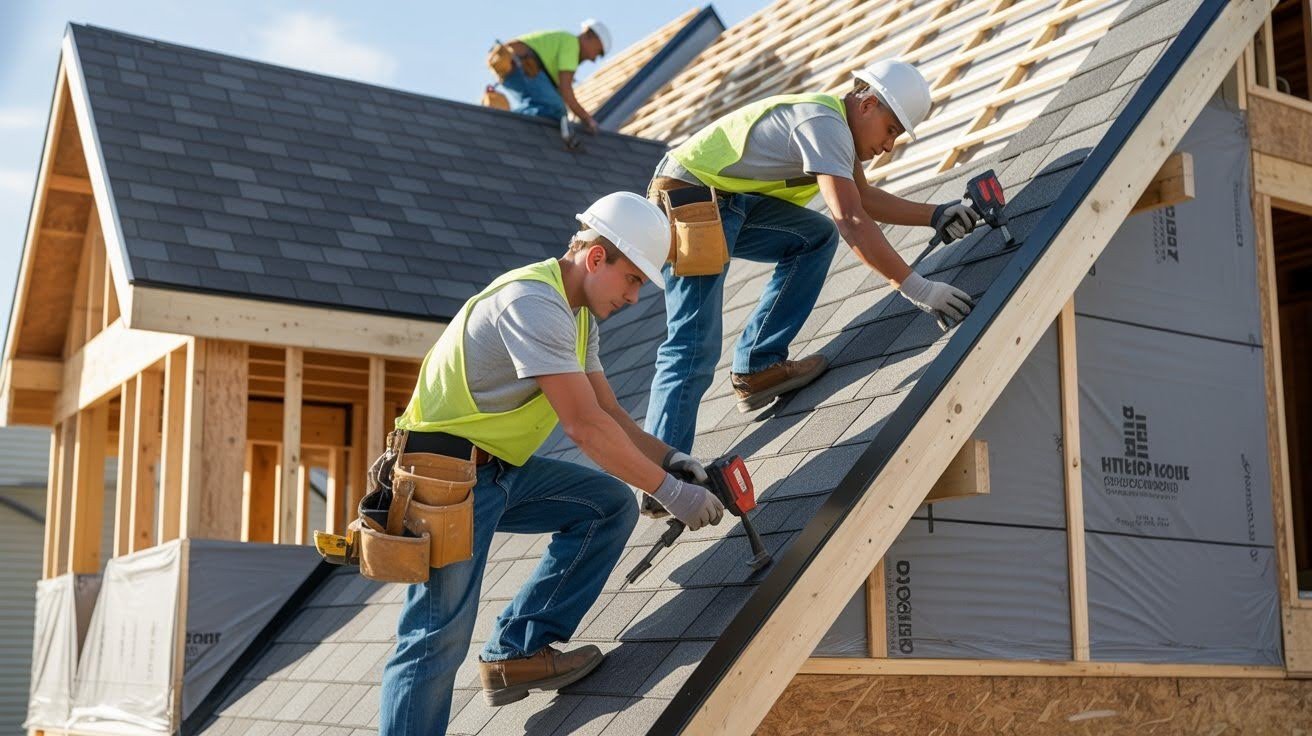
New construction roofing is building a complete roof system on a structure that has never had one before. You start with bare framework and add every layer from the ground up.
Key Differences From Roof Replacement
- Roof replacement works with existing structures and removes old materials
- New construction installs framework, underlayment, and roof covering from scratch
- New construction allows you to integrate the roof with your building design from the start
- No surprises from hidden damage or outdated materials
Why Professional Installation Matters
A professionally installed roof lasts longer and performs better. Experts know how to handle each layer correctly. They understand local building codes and weather patterns.
DIY or unskilled installation creates serious problems. You might face leaks within the first year. Structural damage can develop if the framework isn’t right.
Poor installation means higher maintenance costs down the road.
Your roof protects everything inside your building. Don’t risk it with inexperienced hands.
Planning Your New Construction Roof

Good planning makes the difference between a roof that lasts 20 years and one that lasts 50. Start by understanding your specific needs and budget.
Assessing Your Building Needs
Think about what type of building you’re constructing. Residential homes have different requirements than commercial spaces. Industrial buildings need heavy-duty materials. Multi-family properties must meet stricter codes.
Your architectural style matters too. A modern flat roof looks different than a traditional pitched design. Consider how the roof fits your overall vision for the property.
Budgeting and Cost Considerations
Several factors affect your final cost. Roof size and pitch play a big role since steeper roofs cost more to install. Material choices matter too. Asphalt shingles cost less than metal or tile. Labor rates vary by location. Design complexity and special features add to the price.
Get detailed estimates from multiple contractors. Don’t forget about extra costs like permits, flashing, ventilation systems, and quality underlayment. Set aside 10-15% extra for unexpected expenses.
Selecting a Roofing Contractor
Check credentials first. Look for proper licensing, insurance, and BBB accreditation. Experience with new construction matters more than general roofing work.
Read online reviews and ask for referrals from past clients. A good contractor offers solid warranties on both materials and workmanship.
Ask these questions before signing. How long have you done new construction roofing? Can I see examples of similar projects? What does your warranty cover? Who handles permits and inspections? What’s your timeline for completion?
Choosing the Right Roofing Materials
Your material choice affects everything from upfront costs to how long your roof lasts. Each option has strengths and tradeoffs.
Common Roofing Materials
- Asphalt shingles are the most popular choice. They’re affordable and come in many colors. Installation is quick, and they last 20-30 years.
- Metal roofing is durable and lightweight. It reflects heat to lower cooling costs. Most metal roofs last 40-70 years.
- Wood shingles give homes a classic look. Cedar is most common. They need regular maintenance and work best in dry climates.
- Clay, concrete, and slate tiles last the longest. Some slate roofs survive over 100 years. They’re heavy and expensive but add unique character to buildings.
Factors to Consider
- Your local climate matters most. Heavy snow needs strong materials. High winds require secure fastening. Hot areas benefit from reflective options.
- Check if your structure can support heavy materials like tile. Lighter options like metal work better for some buildings.
- Compare lifespan against cost per square foot. A cheaper roof needing replacement in 15 years might cost more than a pricier option lasting 50 years. Factor in maintenance time and expenses too.
Steps in the New Construction Roofing Process
Installing a new roof follows a specific sequence. Each step builds on the last to create a complete weatherproof system.
Step 1: Framework and Decking Installation
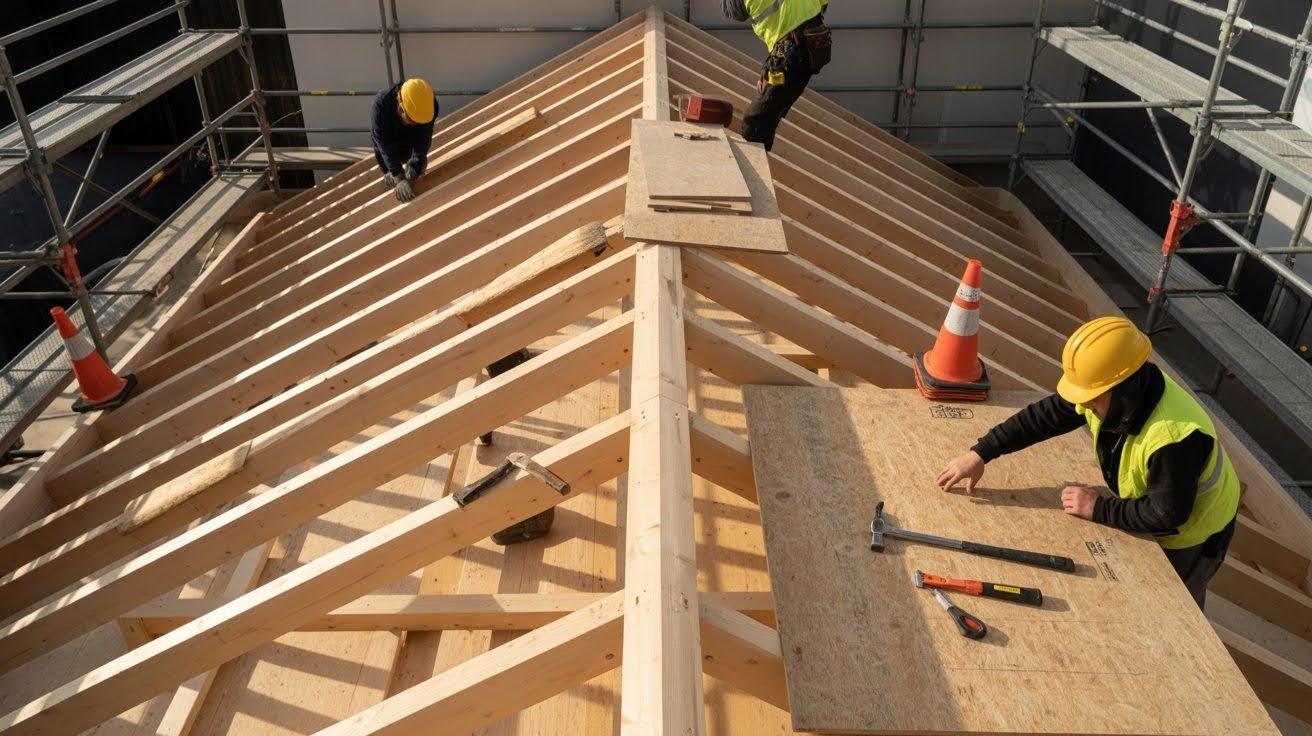
The framework creates the foundation for everything else. Contractors install trusses or rafters first. These support the entire roof structure.
Next comes the decking. This is typically plywood or oriented strand board. It must be secure and level. Proper slope ensures water runs off correctly. Poor framework leads to sagging and leaks later.
Step 2: Underlayment and Waterproofing
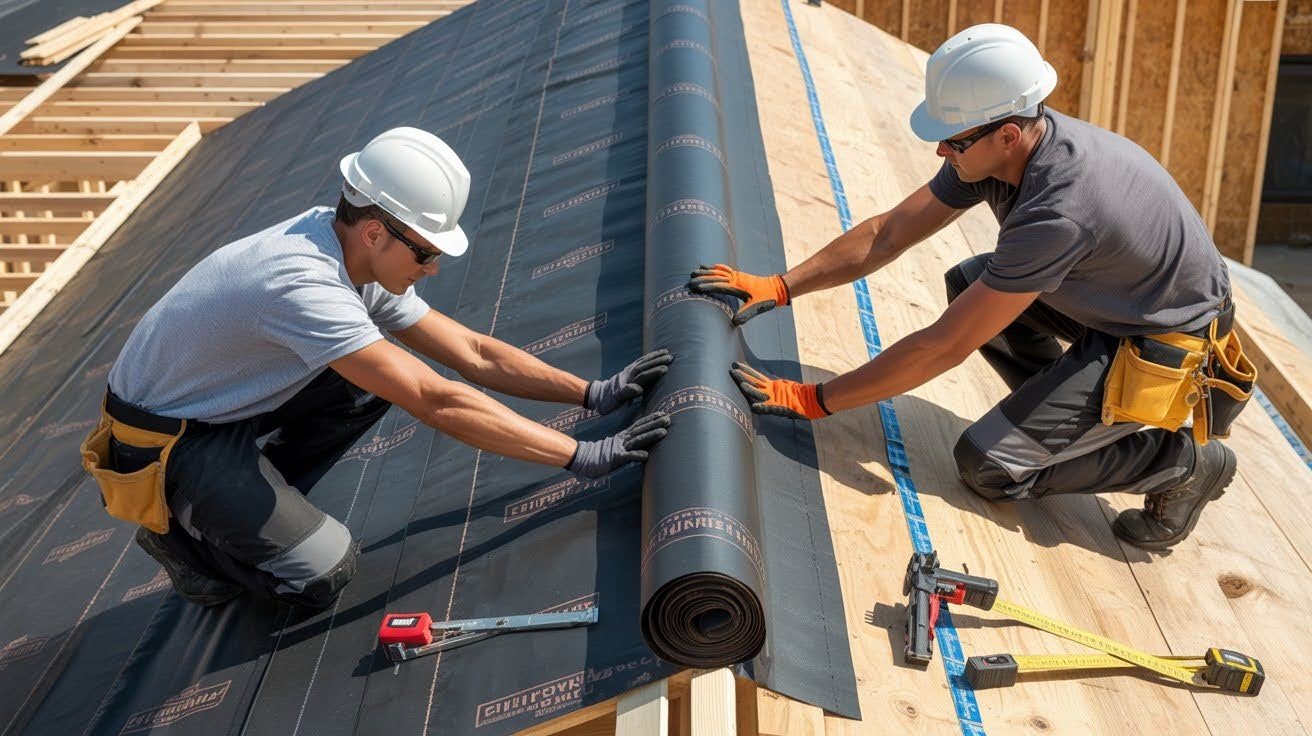
Underlayment goes on top of the decking. This layer protects against moisture that gets past your shingles or tiles. It’s your second line of defense.
In cold climates, ice and water barriers are essential. These go along eaves and valleys where ice dams form. They prevent water from backing up under your roof covering.
Step 3: Roof Covering Installation
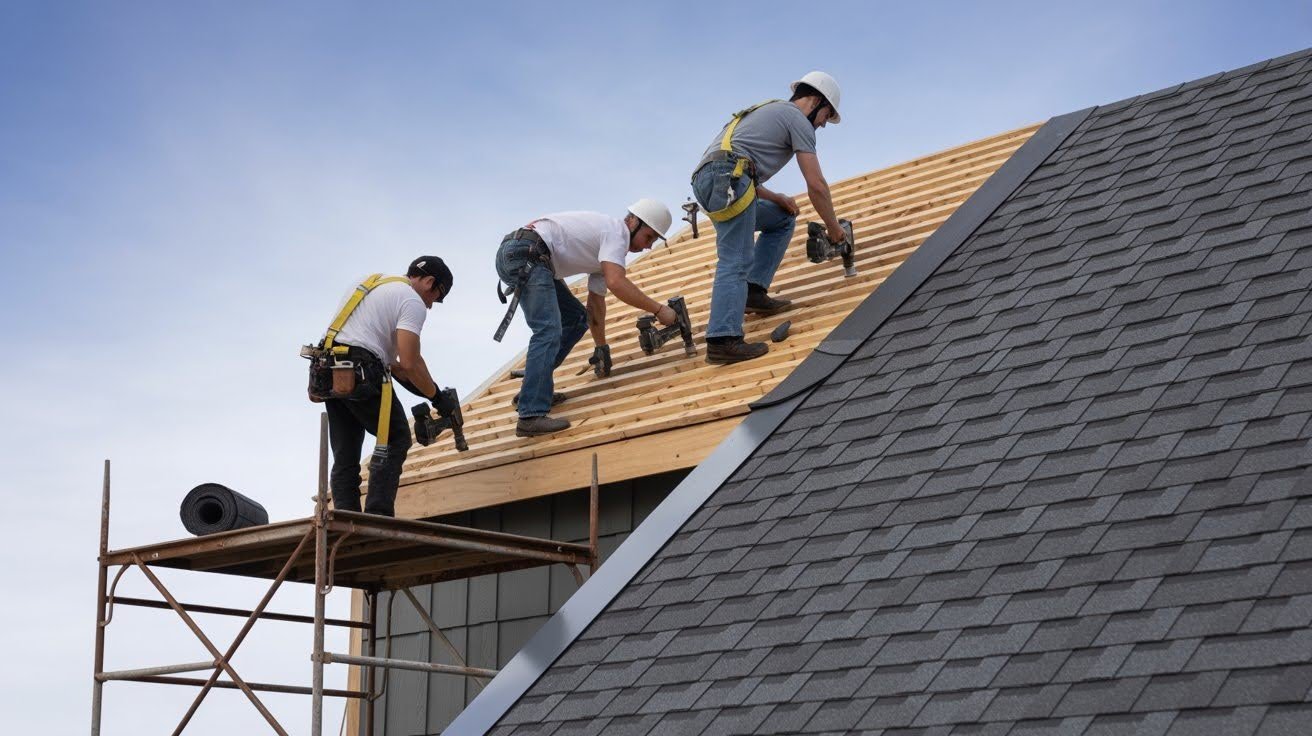
Now the visible roof goes on. Installation methods vary by material. Asphalt shingles get nailed in overlapping rows. Metal panels need special fasteners. Tiles require specific spacing and support.
The roof covering must align with your building design. Colors, patterns, and styles should match your architectural plans.
Step 4: Finishing Touches
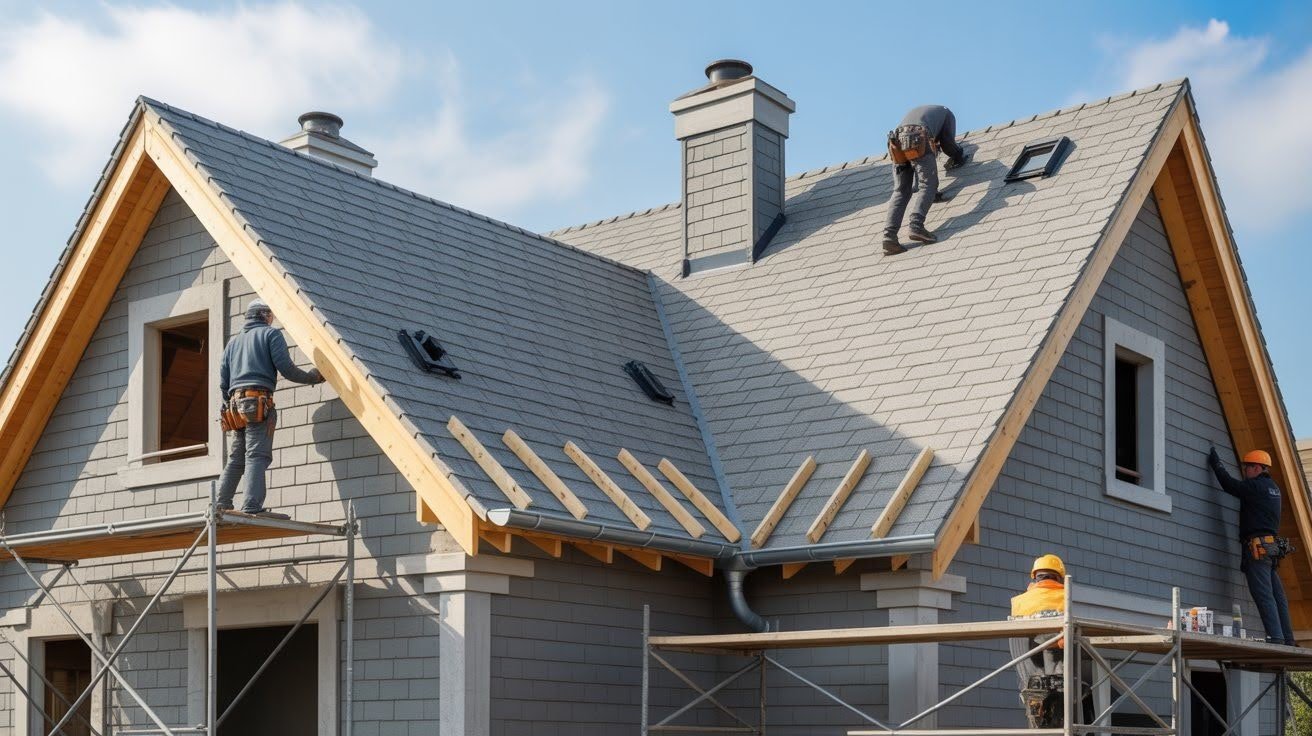
Flashing seals areas where the roof meets walls or chimneys. Vents allow air circulation in your attic. Gutters channel water away from your foundation. Drip edges prevent water from running under shingles.
A final inspection checks every detail. Contractors look for loose fasteners, gaps in flashing, and proper ventilation. This quality check protects your investment.
Maintenance Tips for New Construction Roofs
A new roof needs care to reach its full lifespan. Regular attention prevents small issues from becoming expensive repairs.
- Inspect your roof twice a year, in spring and fall. Look for missing shingles, cracks, or damage. Check after major storms too.
- Clean debris like leaves and branches regularly. Clogged gutters cause water backup. Remove moss or algae growth before it damages materials.
- Watch for leaks inside your building. Water stains on ceilings mean trouble. Address leaks immediately to prevent structural damage.
- Schedule professional maintenance every few years. Experts spot problems you might miss. They can reseal flashing and replace worn parts.
- Keep trees trimmed back from your roof. Overhanging branches drop debris and can scratch surfaces during wind.
- Document all maintenance and repairs. Good records help if you need warranty service. They also add value when selling your property.
Regular maintenance extends your roof’s lifespan by years. The small investment in upkeep saves thousands in premature replacement costs.
Conclusion
Your new construction roof invests greatly within it and protects everything beneath. Smart plans, good materials, skillful installs.
Those actions ensure success. Lifespan for your roof depends upon these very choices. It can last for either 20 years or 50 years.
Don’t go it alone. Talk to seasoned builders knowing many parts of new buildings. Get multiple estimates. Ask questions. Compare warranties and credentials.
Are you prepared for roofing work to begin? Reach nearby certified contractors now. Expert advice and also free estimates are often offered.
A roof will be built that stands strong for decades as the right professional guides you through every decision. Nothing less than what your building deserves.
Frequently Asked Questions
How much does a new construction roof cost?
Costs vary based on roof size, materials, and complexity. On average, expect to pay $5,000 to $25,000 for residential projects, while commercial buildings can cost significantly more.
How long does it take to install a new construction roof?
Most residential roofs take 3-7 days to complete in good weather. Larger commercial projects or complex designs may take several weeks depending on size and material choice.
What roofing material lasts the longest?
Slate and metal roofs offer the best longevity, lasting 50-100+ years. Asphalt shingles last 20-30 years, while clay and concrete tiles can last 40-75 years with proper maintenance.
Do I need a permit for new construction roofing?
Yes, most areas require building permits for new construction roofs. Your contractor should handle permit applications and ensure all work meets local building codes and regulations.
When should I schedule my first roof inspection?
Schedule your first inspection within the first year after installation. After that, inspect your roof twice annually and after severe weather events to catch problems early.

